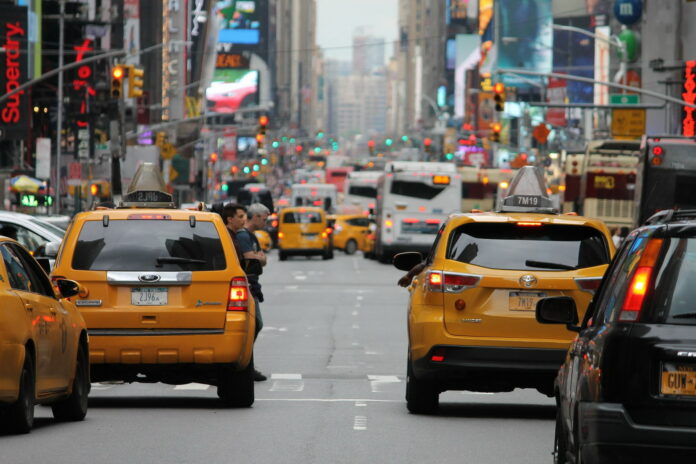New York taxis are a ubiquitous sight on the streets of the city, providing essential transportation for millions of residents and visitors alike. These iconic yellow cabs have become synonymous with New York City’s hustle and bustle, offering a convenient and efficient way to navigate the city’s busy streets.
From iconic yellow sedans to the more recent addition of green “boro taxis” and app-based rideshare services, the taxi industry in New York City has evolved to meet the needs of its diverse population. With their distinctive markings and iconic status, New York taxis play an integral role in the city’s transportation ecosystem.
Interesting Facts About New York Taxis
- The first taxicab service in New York City began in 1907 with a fleet of twelve gasoline-powered cars.
- The iconic yellow color of New York taxis was standardized in 1967 to increase visibility and make them easily recognizable.
- The Taxi and Limousine Commission (TLC) regulates the taxi industry in New York City, overseeing licensing, safety standards, and fares.
- The most common type of taxi in New York City is the yellow medallion taxi, which can pick up passengers anywhere in the five boroughs.
- The medallion system, introduced in the 1930s, limits the number of taxis allowed to operate in the city and has led to high prices for taxi medallions.
- New York taxis are required by law to accept credit cards as a form of payment, in addition to cash.
- The fare for a New York taxi ride is calculated based on distance traveled and time spent in the cab, with additional charges for tolls and surcharges during peak hours.
- The “taxi of tomorrow,” a Nissan NV200 model, was selected as the official New York City taxi in 2011 and is gradually replacing older models.
- New York taxis are equipped with GPS systems to help drivers navigate the city’s complex street grid and find the fastest routes to their destinations.
- The New York City Taxi Drivers’ Union represents taxi drivers and advocates for their rights and interests.
- Taxi drivers in New York City are required to pass a rigorous licensing exam and background check before they can operate a taxi.
- The medallion price peaked at over $1 million in 2013 but has since declined due to competition from rideshare services like Uber and Lyft.
- The first electric taxis were introduced in New York City in 1897 but were quickly replaced by gasoline-powered vehicles.
- New York taxis are required to display their medallion number, license plate number, and fare information prominently in the cab.
- The “hail” signal, where passengers raise their hand to signal a taxi, is a common sight on the streets of New York City.
- Taxi drivers in New York City often work long hours and face challenges such as traffic congestion and inclement weather.
- The “Taxi of Tomorrow” program aimed to improve passenger comfort and safety by introducing modern features like a sunroof, USB charging ports, and enhanced legroom.
- The New York City Taxi and Limousine Commission (TLC) oversees the safety and maintenance of taxis, conducting regular inspections to ensure compliance with regulations.
- The introduction of rideshare services like Uber and Lyft has led to increased competition for taxis in New York City and changes in the industry.
- Taxi drivers in New York City must adhere to strict regulations regarding cleanliness and maintenance of their vehicles, including regular inspections and cleaning.
- The New York City taxi fleet includes hybrid vehicles, which are more fuel-efficient and environmentally friendly than traditional gasoline-powered taxis.
- Taxi drivers in New York City are required to undergo training on topics such as customer service, safe driving practices, and city geography.
- The “Taxi of Tomorrow” program was criticized for its lack of wheelchair accessibility, leading to a lawsuit and subsequent modifications to make the vehicles wheelchair-friendly.
- Taxi drivers in New York City often rely on smartphone apps to find passengers and navigate the city, supplementing traditional street hails.
- The Taxi and Limousine Commission (TLC) issues fines and penalties to taxi drivers who violate regulations, such as refusing to pick up passengers or overcharging fares.
- New York taxis are a common sight at major transportation hubs like airports, train stations, and bus terminals, providing convenient transportation for travelers.
- Taxi drivers in New York City come from diverse backgrounds and often speak multiple languages, reflecting the city’s multicultural population.
- The New York City taxi industry generates billions of dollars in revenue each year, supporting thousands of drivers and their families.
- Taxi drivers in New York City are required to display their license and photo identification prominently in the cab, ensuring transparency and accountability.
- The introduction of rideshare services like Uber and Lyft has led to changes in the taxi industry, including decreased demand for traditional taxis and increased competition for drivers.
